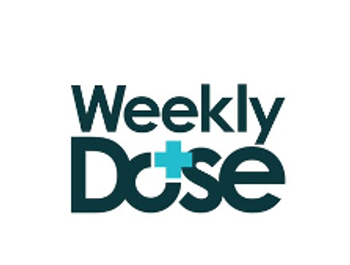
The Journal of Respiratory Diseases
- The Journal of Respiratory Diseases Vol 6 No 1
- Volume 6
- Issue 1
Quick Take: Do dietary phytoestrogens reduce the risk of lung cancer?
Dietary phytoestrogens are plant-derived nonsteroidal compounds that have weak estrogen-like activity. The 3 main classes of phytoestrogens are isoflavones, lignans, and cumestrans. Isoflavones are the most common form and are found in soy products and chickpeas, as well as in a number of other foods. Lignans are found in rye grains, linseeds, carrots, tea, spinach, and other vegetables. Cumestran is found in beans, peas, clover, spinach, and sprouts.
Dietary phytoestrogens are plant-derived nonsteroidal compounds that have weak estrogen-like activity. The 3 main classes of phytoestrogens are isoflavones, lignans, and cumestrans. Isoflavones are the most common form and are found in soy products and chickpeas, as well as in a number of other foods. Lignans are found in rye grains, linseeds, carrots, tea, spinach, and other vegetables. Cumestran is found in beans, peas, clover, spinach, and sprouts.
Phytoestrogens have been demonstrated to have chemopreventive effects.1-4 In addition, their estrogen agonist and antagonist properties may account for some of the benefits, including a cardioprotective effect, reduced risk of osteoporosis, and improved cognitive function. Some phytoestrogens have an affinity for estrogen receptors present in lung tissue and may influence the regulation or deregulation of cancer growth and hormone responsiveness.5
A recent study by Schabath and associates6 evaluated the relationship between the dietary intake of phytoestrogens and the risk of lung cancer. Their study included 1674 patients with lung cancer and 1735 healthy controls.
They found that phytoestrogen intake was associated with reduced lung cancer risk. The highest quartiles of phytoestrogen intake were associated with protective effects ranging from 21% to 46%. The Table summarizes the phytoestrogen intake for lung cancer cases and controls.
Sex-specific differences in phytoestrogen intake and protective effect were also observed.6 In men, trends for decreasing risk with increasing intake were found for each phytoestrogen group, and there were protective effects for the highest quartile of intake ranging from 24% for phytosterols to 44% for isoflavones. In women, the trend was significant only for total phytoestrogen intake from food sources, with a 34% protective effect for the highest quartile of intake.
The benefits of high phytoestrogen intake were observed in both never smokers and current smokers, but were less evident in former smokers.6
References:
REFERENCES
1. Fournier DB, Erdman JW Jr, Gordon GB. Soy, its components and cancer prevention: a review of the in vitro, animal, and human data.
Cancer Epidemiol Biomarkers Prev.
1998;7:1055-1065.
2. Sarkar FH, Li Y. Mechanisms of cancer chemoprevention by soy isoflavone genistein.
Cancer Metastasis Rev.
2002;21:265-280.
3. Chen CC, Sun YT, Chen JJ, Chiu KT. TNF-alpha- induced cyclooxygenase-2 expression in human lung epithelial cells: involvement of the phospholipase C-gamma 2, protein kinase C-alpha, tyrosine kinase, NF-kappa B-inducing kinase, and I-kappa B kinase 1/2 pathway.
J Immunol.
2000;165:2719-2728.
4. Ding H, Duan W, Zhu WG, et al. P21 response to DNA damage induced by genistein and etoposide in human lung cancer cells.
Biochem Biophys Res Commun.
2003;305:950-956.
5. Stabile LP, Davis AL, Gubish CT, et al. Human non-small cell lung tumors and cells derived from normal lung express both estrogen receptor alpha and beta and show biological responses to estrogen.
Cancer Res.
2002;62:2141-2150.
6. Schabath MB, Hernandez LM, Wu X, et al. Dietary phytoestrogens and lung cancer risk.
JAMA.
2005; 294: 1493-1504.
Articles in this issue
almost 20 years ago
Diagnostic Puzzlers: An elderly man with lung and shoulder massesalmost 20 years ago
Cystic fibrosis in adults: An update on diagnosis and treatmentalmost 20 years ago
Evaluating dyspnea: A practical approachalmost 20 years ago
Bronchoscopy Clinic: A patient with "worsening asthma"Newsletter
Enhance your clinical practice with the Patient Care newsletter, offering the latest evidence-based guidelines, diagnostic insights, and treatment strategies for primary care physicians.



















































































































































































































































































